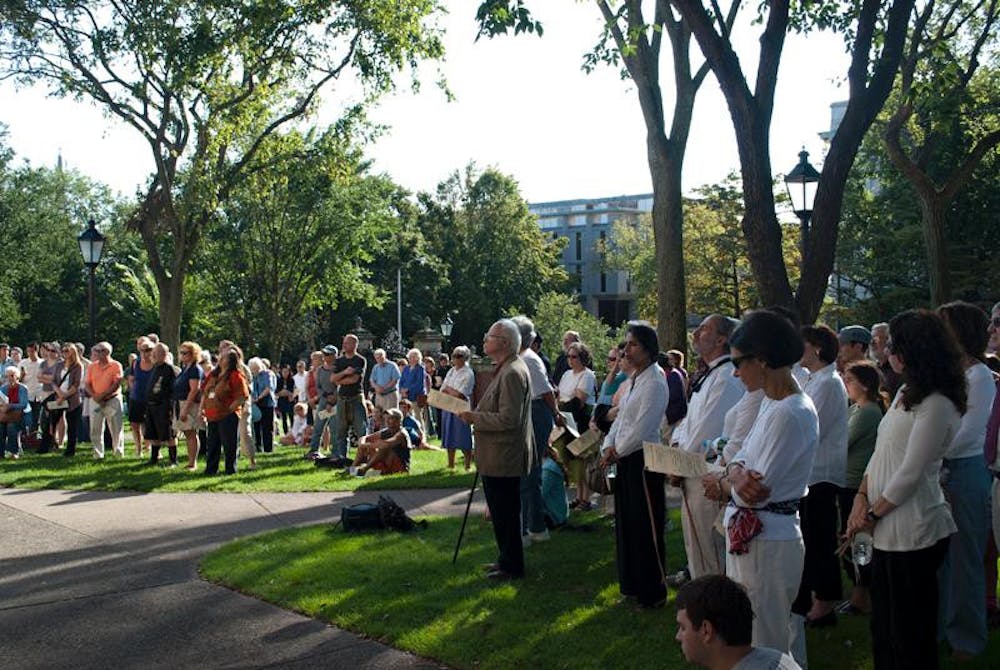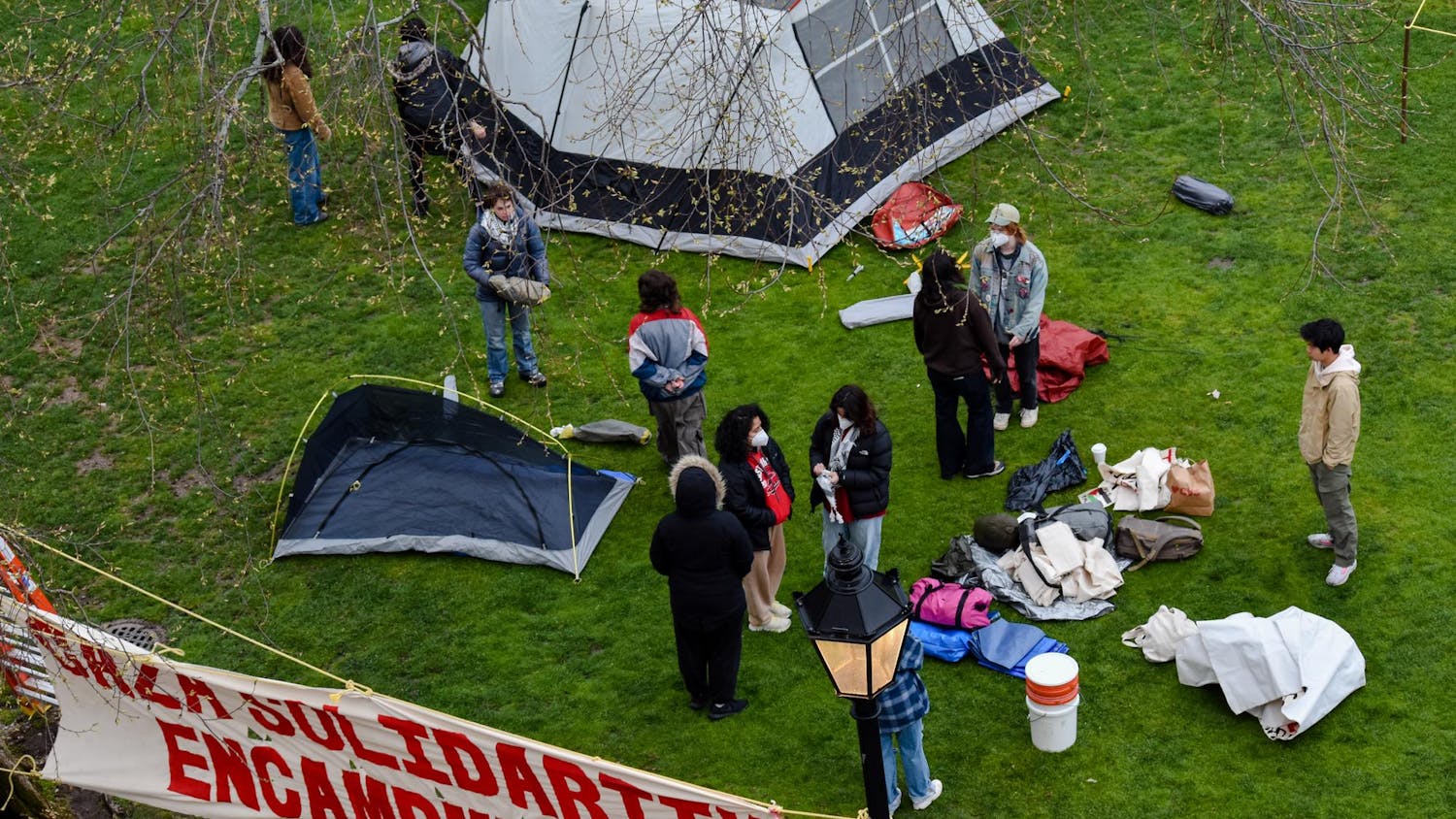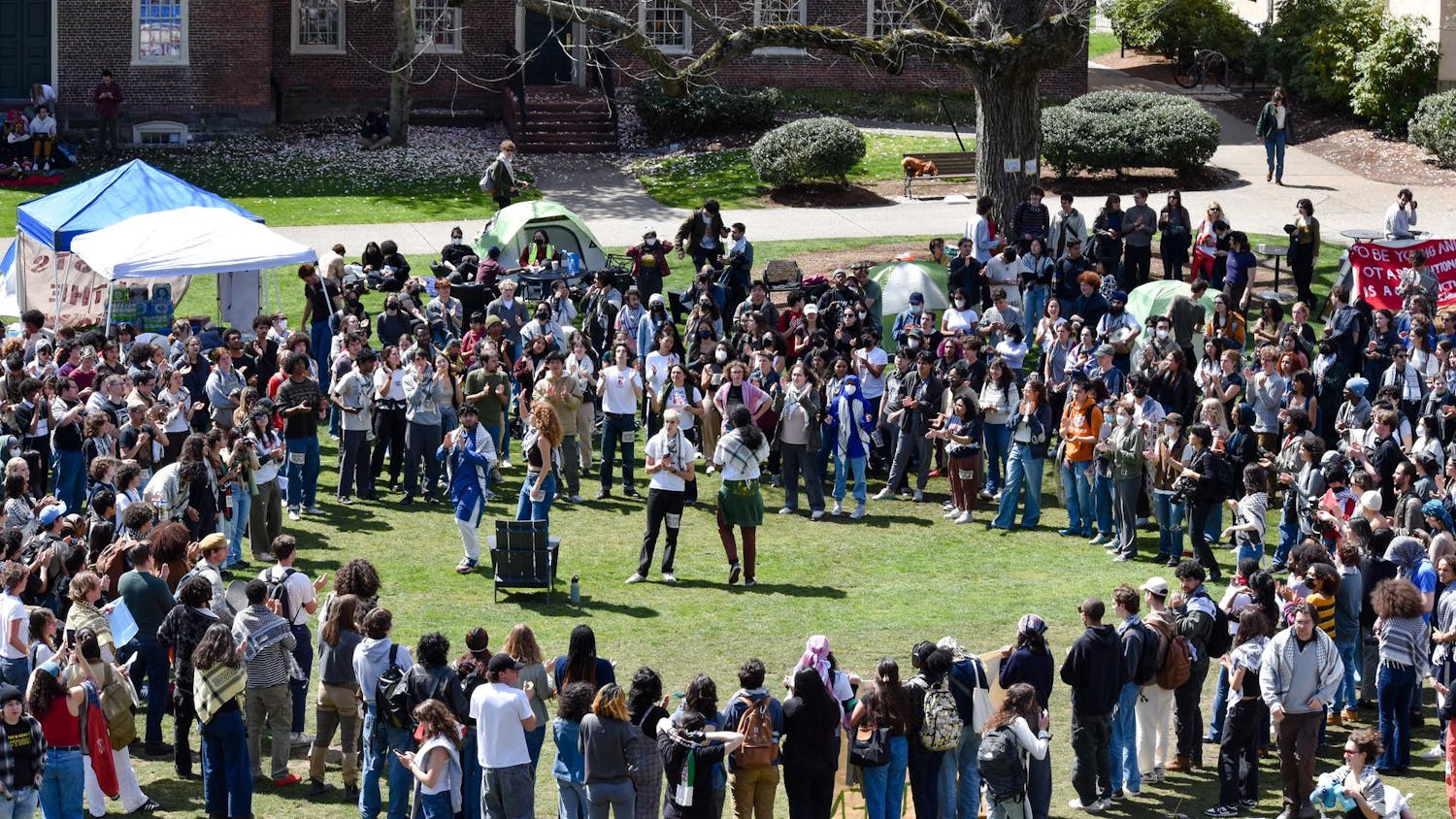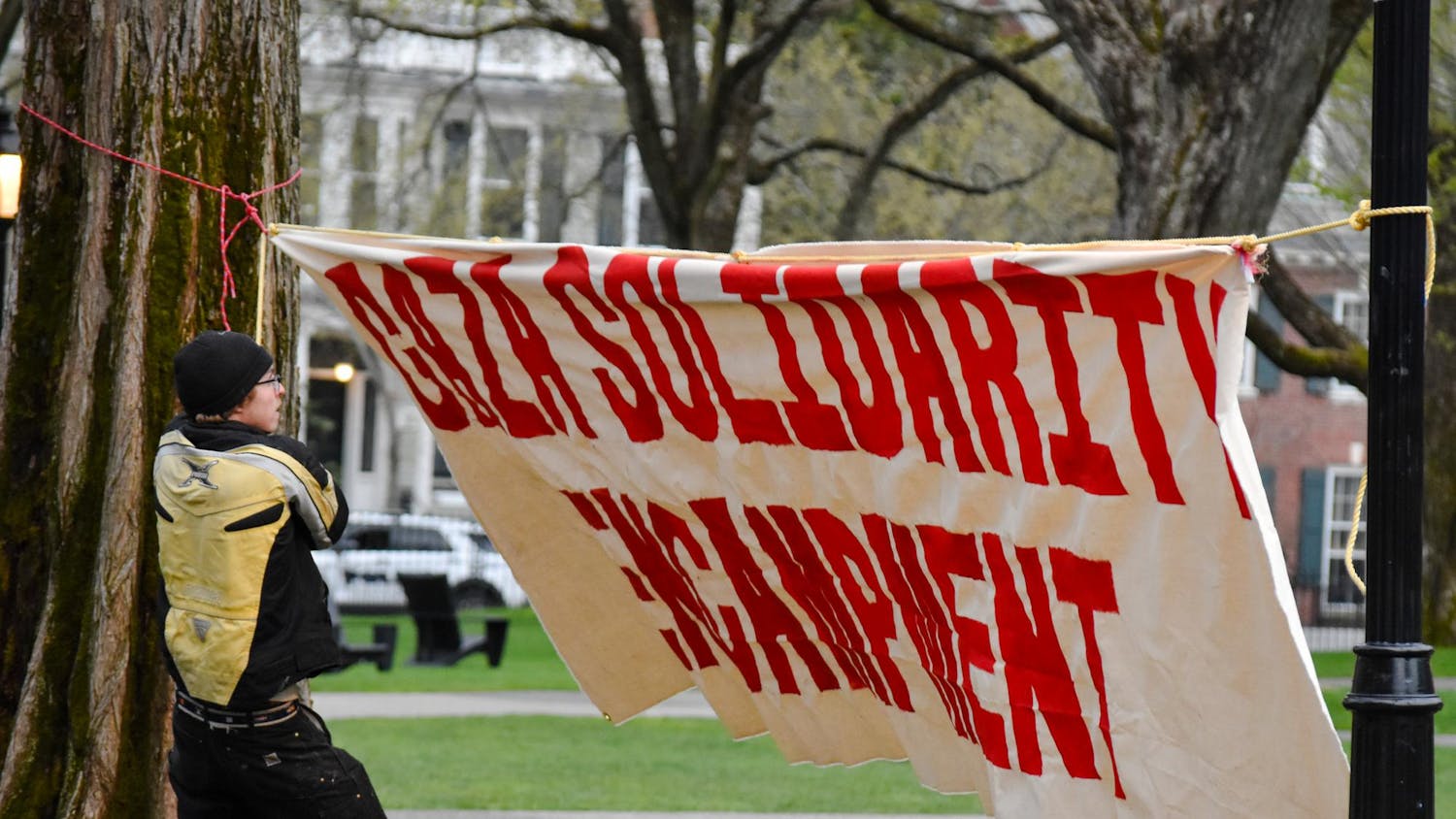It was a day no one wanted to remember, but one the Brown community gathered to commemorate nonetheless.
People gathered across campus to commemorate the 10th anniversary of the Sept. 11 attacks Sunday, sharing their experiences and paying their respects. They walked through a labyrinth on the Main Green. They acknowledged the day on the steps of Manning Chapel at a memorial service.
Most current undergraduates were elementary or middle school students on the day of the attacks, and many recall interrupted recesses, canceled school days or watching television at breakfast as the twin towers collapsed into rubble.
Ten years ago, after the towers fell, more than 1,000 members of the Brown community gathered at Manning Chapel that afternoon. People lit candles on the steps of Faunce House and the chapel.
Though no students on campus at the time lost an immediate relative on Sept. 11, six Brown alums died in the terrorist attacks.
Honoring the lost
On the Main Green and at a ceremony at Manning Chapel, people remembered members of the community who died on Sept. 11. At 4 p.m., more than 100 members of the Brown and Providence communities joined together on the steps of Manning Chapel to acknowledge the anniversary at a memorial service entitled "A Rite of Remembrance."
"Today we stand exactly where we stood 10 years ago at Brown," said Janet Cooper Nelson, the University chaplain. Greeting those in attendance, she espoused the creation of "a global realm of goodness and of mercy."
The service was centered around a litany of reflection in which faith leaders spoke to darkness, terror, heroism, collective mourning, interfaith and multicultural community and hope.
"We do still have the humanity to be the nation we once promised to be," said President Ruth Simmons at the ceremony.
Held by the Office of the Chaplains and Religious Life, another event, "Celebrating the Work of Building Peace," allowed the community to reflect on peace as they walked through a labyrinth, folded origami cranes and made peace flags.
"I thought this was the most apropos way of celebrating," said Rita Holt, who was in attendance, after completing the labyrinth. "What's nice is you're alone but you're with people at the same time."
The community also remembered the six alums who died in the attacks.
Charles Margiotta, Sr. '79 P'13, a firefighter from Staten Island, was lost in the flames at the World Trade Center.
"He was a larger than life character," said his brother Michael Margiotta. "He was into everything — I am yet to figure out when he slept." At Brown, Margiotta was a member of the Ivy League championship football team in 1976.
Bruce Alterman '79, Margiotta's roommate at Brown, checked his voicemail on Sept. 11 to find a 20-minute message accidentally left by Margiotta as his phone continued to trasmit from his pocket. "I could hear him barking orders to the firefighters," he said. "And then the phone went out."
Margiotta was one of four former Delta Tau brothers at Brown who were killed in the attacks. Raymond Rocha '95, an analyst at Cantor Fitzgerald, and Paul Sloan '97, who worked at Keefe, Bruyette and Woods, were also killed at the World Trade Center.
Dave Laychak '83 was working as a civilian budget analyst at the Pentagon when American Airlines Flight 77 hit.
"He was a kind, gentle soul — one of those people that makes you feel like he was your best friend," said his wife Laurie Laychak. The two met at the Pentagon. His son Zachary wore the same number on his high school football jersey that his father did as a defensive back on the Brown football team. "He beat his own drum — he wasn't a conformist," said Grant Harshbarger '83.
Joanne Weil '84 was an attorney working at the World Trade Center when the building was attacked. Donald Greene '71 was on United Airlines Flight 93 when it crashed in Shanksville, Pa. Greene was a wrestler at Brown and a certified pilot.
Changing history
"The faculty understood that the world had changed and become a more frightening place for students," said Wendy Schiller, associate professor of political science.
Schiller said she remembers that on Sept. 11, classes had just begun. "It was hard for the University to deal with," she said.
But time has changed the academic perspective on the events. "You ask any faculty member who has taught since 9/11," she said. "It's history now. It changes over time. It changes every year, the further we get from 9/11."
Mark Blyth, professor of political science, said until Sept. 11, Americans had been sheltered from "a political technique that is very real in other countries," like Scotland, where he grew up.
"This is the dark side of globalization," Blyth added.
The public memory of Sept. 11 today is the focus of AMCV 1700G: "Public Memory: Narratives of 9/11," taught by Beverly Haviland, senior lecturer and visiting associate professor of American civilization. Haviland said she first taught the class in 2009 after she explored the issue while writing a column for Amerika Estudien, a European American studies journal. In the first year of the class, Haviland said she "tried to keep the discussion focused on the texts we were reading," rather than bring up personal memories, she said. But at the end of the course, she said one of these students produced a 12-page autobiographical piece about her experience on Sept. 11.
Alnoor Dhanani, a visiting lecturer of religious studies, said Sept. 11 affected both his role as a teacher and his personal life. Dhanani is teaching RELS 0150: "Islam: From Mohammed to 9/11 and Beyond."
"This is the 10th anniversary, so I started my class with talking about it," he said. It is important to notice, he said, that Muslims are frequently perceived by Americans through a
religious lens and are seen as separate from secular society.
Putting Muslim diversity in context has been the focus of his Islam classes since Sept. 11, Dhanani said.
Dhanani said he has felt profiled for being a Muslim in places like airports since Sept. 11. "Before and right after 9/11," Dhanani said, "There was a feeling that you can't paint over all Muslims with the same brush. Now that's not so much."

ADVERTISEMENT




